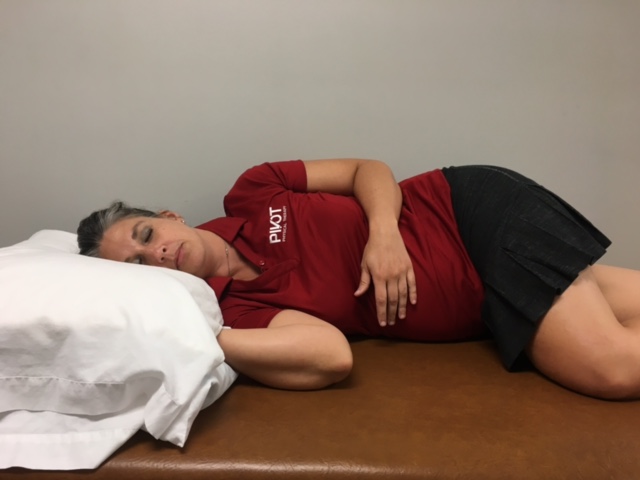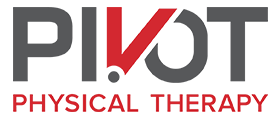Waking up refreshed can be the beginning of a great day. Restful sleep is the goal for all of us but there is more going on when we lie down to rest than meets the eye. Sleep is when much of our tissue healing takes place. Every day, through our activities and processes of life, we are causing micro-trauma to all kinds of soft tissue structures. Human growth hormone (HGH) is produced by the pituitary gland and is secreted during sleep. HGH is considered to be an “anabolic” or “building up” molecule because it interacts with the liver to produce Insulin-like Growth Factor 1 (IGF-1). IGF-1 has been shown to cause cell growth production to repair injured muscle, cartilage, tendon, nerve, bone, and internal organ tissue. It follows therefore, that finding sleep positions that allow for the most uninterrupted sleep will be the most beneficial for maximizing our body’s healing potential.
Some people wake in the morning, or in the middle of the night, with soreness in their shoulders, neck, low back, or hips. Less common, soreness in elbows, wrists, and knees can occur at night as well. Often this is because of poor positioning in bed that is putting stress, strain, compression, or shearing on a joint and its structures. The effect of this stress is then magnified by the length of time spent in a suboptimal position. Stress on soft tissue is defined as force per unit area, while strain is the relative elongation or stretch of a given length of tissue. Repeated stress (force) and/or strain (stretch) on any soft tissue structure can result in injury, regardless of whether it occurs while one is asleep or on an assembly line, doing the same motion day after day. We have all heard about repetitive motion injuries, well they can occur even if there is no motion or if the poor position is maintained for an extended period of time.
The key concept to correcting poor positioning during sleep is to find the most neutral, supportive posture as possible. Neutral posture, for lying down, would be defined as a posture that places the least amount of stress on a joint. This is the same as standing in a posture that is efficient and stacks the spine well (see previous PT Corner articles on posture). In bed, neutral positions are best accomplished using pillows and towels as props to help hold joints in supported neutral positions.
Following are some common dysfunctional sleeping positions, the resultant stress/strain on a joint, and the appropriate remedy.
Shoulder Stress
The Problem: Lying on one side of the body with the down shoulder tucked too far underneath the weight of the upper body, which closes or pinches together the front of the shoulder and the chest. This position compresses the front of the shoulder and can cause damage to the acromioclavicular (AC) joint, or impinge bursa and tendon in the front of the shoulder. The same position with regard to the top shoulder is also rounded too far forward, and can result in the same compressive forces in the front of top shoulder.
The Remedy: Lying on one side but on the back half of the down shoulder, so as not to round forward so much. When a pillow(s) to “hug” in front of the body is used, the shoulders remain in a more neutral and supported state, with compressive forces on both reduced. In extreme cases of acute shoulder injury, the elbow of the top arm may need to remain resting on the side of the body. Then a pillow(s) is needed to support under the forearm, to maintain neutral.
Neck Strain/Shear
The Problem: Lying on one side with an unsupported “span” under the neck between the trunk and the pillow. The portion of the cervical spine that is unsupported has the force of gravity pushing down on it, similar to a suspension bridge sagging between the two anchored ends. Gravity, then, is placing a lateral force or shear on spinal ligaments and facet joints. Other common issues are when the pillow used under the head and neck is either too high or too low. If the pillow is too high, the neck and head are bent up. If pillow is too, low the head and neck are bent down. Both positions take the cervical spine out of its neutral mid-line position, putting strain (overstretch) on one side of the spine, and stress (compression) on the opposite side of the spine. This can lead to a stiff neck in the morning and further problems if poor positioning is performed long term.
The Remedy: Place a pillow directly against the base of the neck and firmly push into the body, to adequately support the spine where it exits the trunk. This removes any unsupported span along the length of the spine. Make sure that the pillow support fills in the space under the side of your head so that your nose and chin are in line with mid-line of your body.
Hip or Low Back Strain
The Problem: Lying on one side with the top knee bent forward and resting on the bed with the bottom leg in a straight position. When the top knee is bent and touching the bed, the pelvis, lumbar spine, and hip muscles are in a severely rotated and over-stretched position. This position can cause a low back ache, hip bursitis, or strain to the sacro-illiac joint.
The Remedy: Place a pillow between your bent knees, with the top leg in line with the bottom leg. This will maintain a neutral position for the low back, pelvis and hips. Be careful to make sure pillows support the entire length of your top leg, from groin to ankle. Leave no “span” unsupported.
Low Back Strain
The Problem: Lying on your back with knees and legs straight can cause strain in low back.
The Remedy: This is a simple one place one or two pillows under the knees to resolve the tension and allow for normal lumbar curve, thus alleviating the back ache.
Belly Sleeping
Belly sleeping is not a recommended position for maintaining neutral joints. Most notable is the extreme rotation that must happen in the cervical spine. If belly sleeping is your only option – the position can be modified with a good body pillow. The body pillow is placed lengthwise under, say, the entire right side of the body from shoulder to ankle. The right bent knee and leg are placed on top and over the pillow, with the left leg remaining straight. This allows for less rotation in the cervical spine.
Finding a comfortable sleeping position may take some trial and error and lots of pillows but by using them you can provide support for all your joints. Your joints will be in a good neutral position and leave no “spans” for gravity to act on. Experiment for yourself and be more comfortable during the night and have less aches in the morning.
If you have any questions or need additional information just give us a call 828-254-3525. We are here to help.
A big THANK YOU to Michael Abbas, PTA at Pivot Physical Therapy for this post


